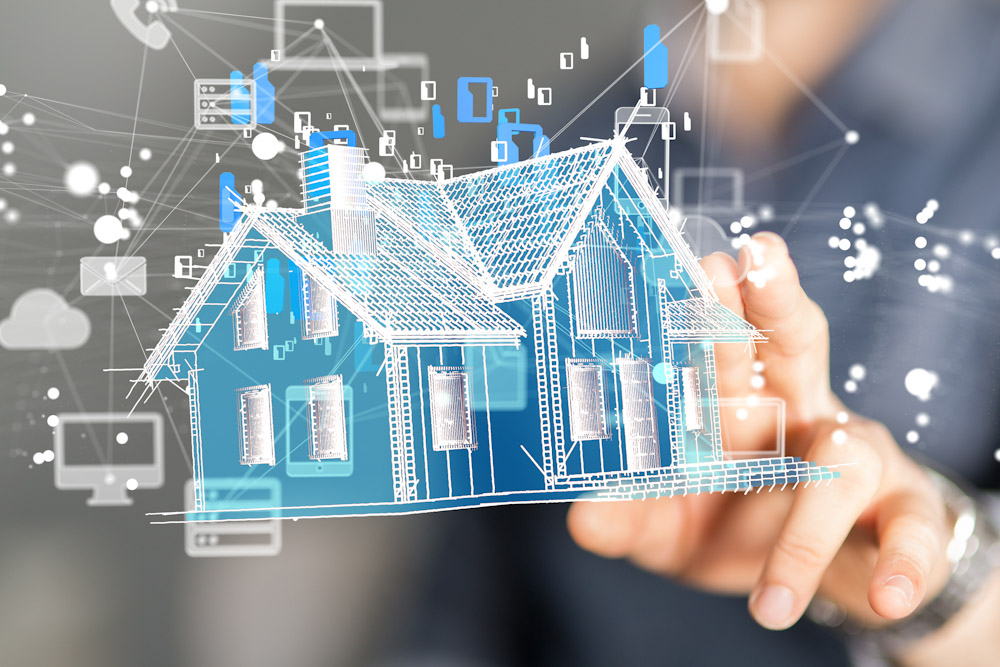Imagine if you were able to physically see the electricity behind your walls and under your floor, bouncing from appliance to appliance; flashes of light pinging between modems, computers, and printers; TVs shooting jets of energy towards satellites in space and game consoles on the floor; veins of electricity snaking from powerline transformers to the microwave above the stove, or to the stove itself. This “fourth sight” into the invisible world of power distribution would give you a whole new appreciation for all the ways in which your appliances, tools, and toys run off of a steady stream of electricity that is ultimately supplied to your home by a power company who appreciates the money you give them.
Homes today are like microscopic cells within the body, each one sheltering a myriad of different systems, all operating independently of one another, and yet connected to the overarching goal of keeping the house﹘keeping your life﹘running smoothly. We know that in a cell, much like in the body as a whole, each of these systems requires power to operate; not all the systems require the same amount of energy, but if the nucleus were to shut down, the cell would die. If we could use our newly gained ability to see which of the systems in our home required the most power, chances are that we would be surprised by the results.
The Big Three in Power Usage
Knowing just how the power is being spent means that we understand better how our money is being spent, and we can make better more informed decisions on how to conserve power to be used less needlessly. What follows is a basic list of systems within the home and their power consumption needs.
1. Air Temperature Regulation
Perhaps unsurprisingly, the air conditioning and heating systems take up the majority of power used in the home. Despite new HVAC units being manufactured and installed every year to make better use of the power that it’s drawing, regulating an entire home’s temperature requires the system to run a cycle at least four times an hour, all day.
2. Water Temperature Regulation
Next on the list is not unlike the first: water heating. Although you likely aren’t running heated water from your taps literally all day, think how often you do run your water﹘and you expect it to be hot every time you do, like the rest of us. In order for your water heater to heat any water in your home at a moment’s notice, it can run up to eight times a day, expending a tremendous amount of energy each time.
Each of these two systems, the water and air temperature regulators, combine to use up nearly two-thirds of all the energy your home uses in a day. When confronted with statistics like that, it’s no small wonder that we aren’t more resentful of our HVAC and water heater when we go to work each day, since we don’t get to directly make use of their efforts. In light of this, there has been a major push over the last decade or so within the residential sector, to install power source alternatives that are both fiscally and environmentally responsible. Solar panels, battery storage, and smart home appliances let you control more of the energy that you harness each day, and save yourself quite a bit of money in the long run.
3. Appliances
This is a bit of a catch-all since we have appliances in nearly every room in the house, from microwave ovens to electric alarm clocks. But that is the point; we have appliances in every room in the house that either actively uses electricity (like lightbulbs or TVs that are switched on), or passively (game consoles in rest mode, or ovens that display a digital clock). Due to the nature of our digital age, many of these appliances are in some way working, even if they’re turned off. Many remotely activate to download firmware updates, or are constantly charging even if their screens are dark.
Store Power Intelligently
When presented with the facts of residential power consumption, there are plenty of reasons to consider power storage alternatives that create ways to save energy instead of constantly expending it. That’s where Storz Power comes in. Our team has made Smart Access to your home﹘the ability to control your power usage and get reports on your home’s electricity usage, all from the convenience of your phone﹘a reality. Give us a call today to learn more about how you can cut your power bill down substantially, and maybe even make some money, with the help of Storz Power.



